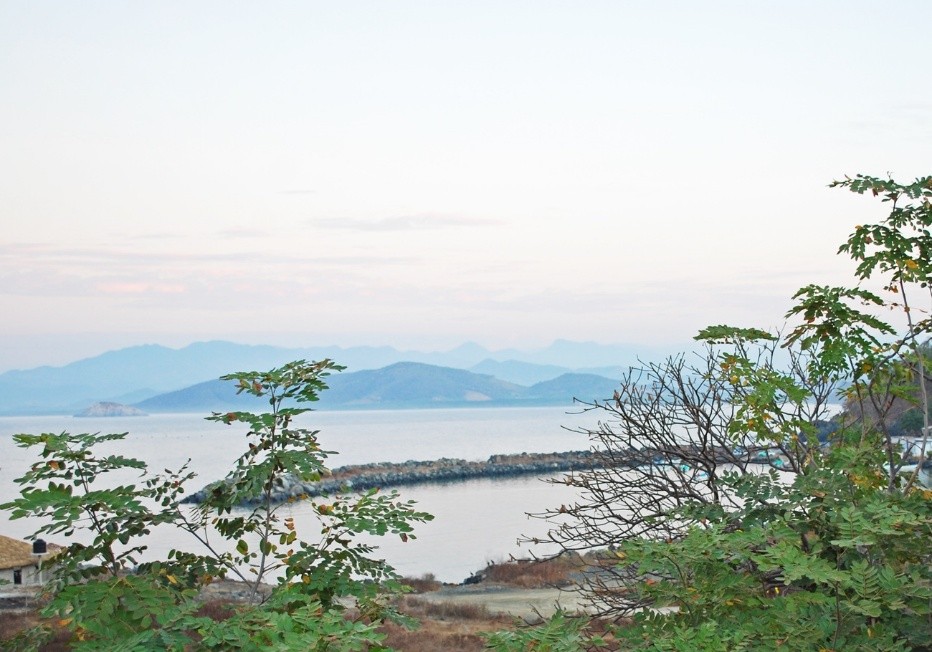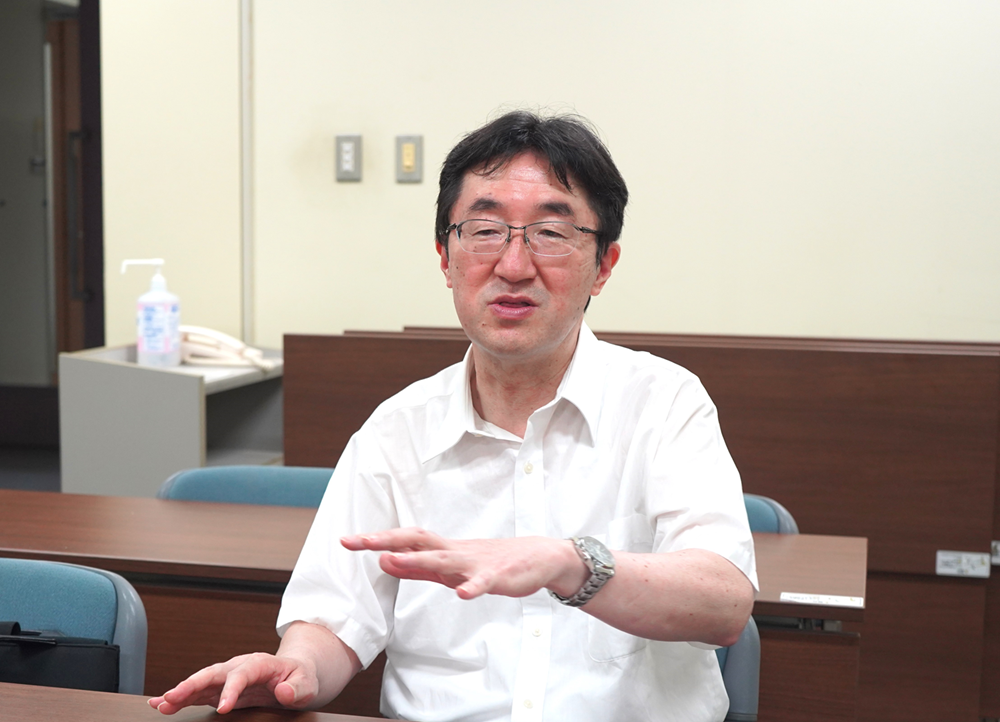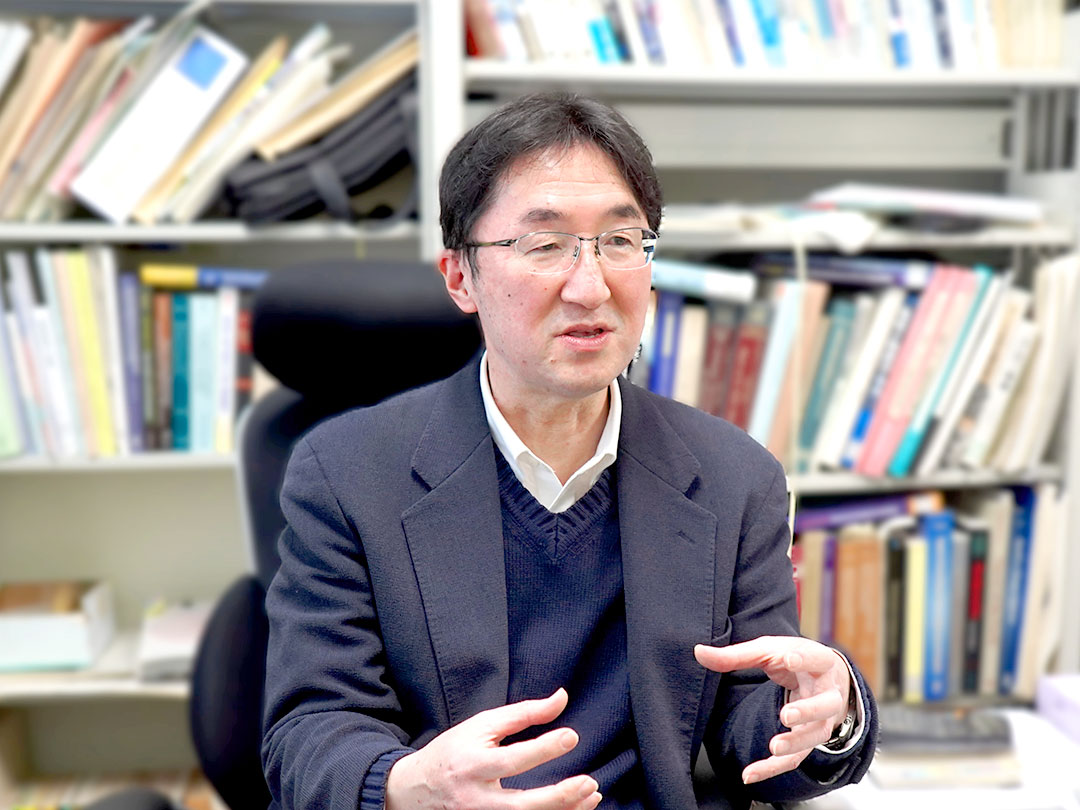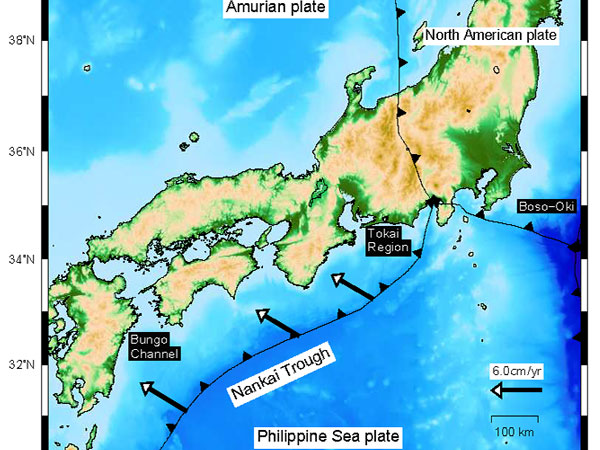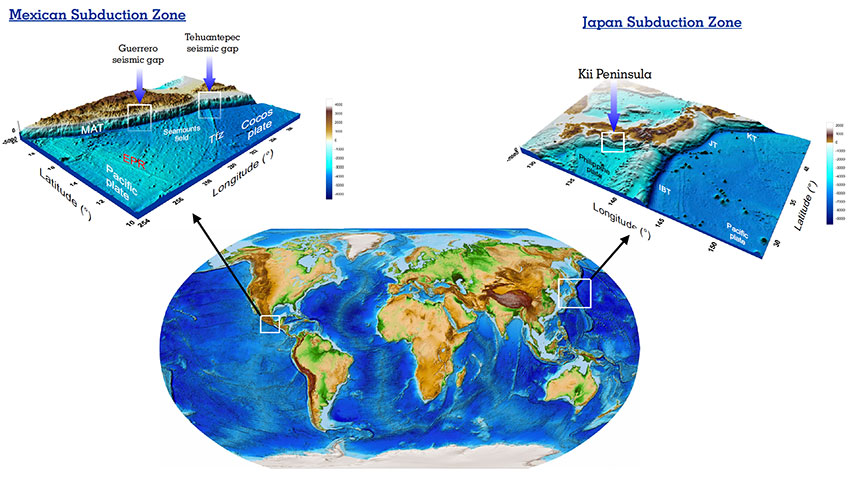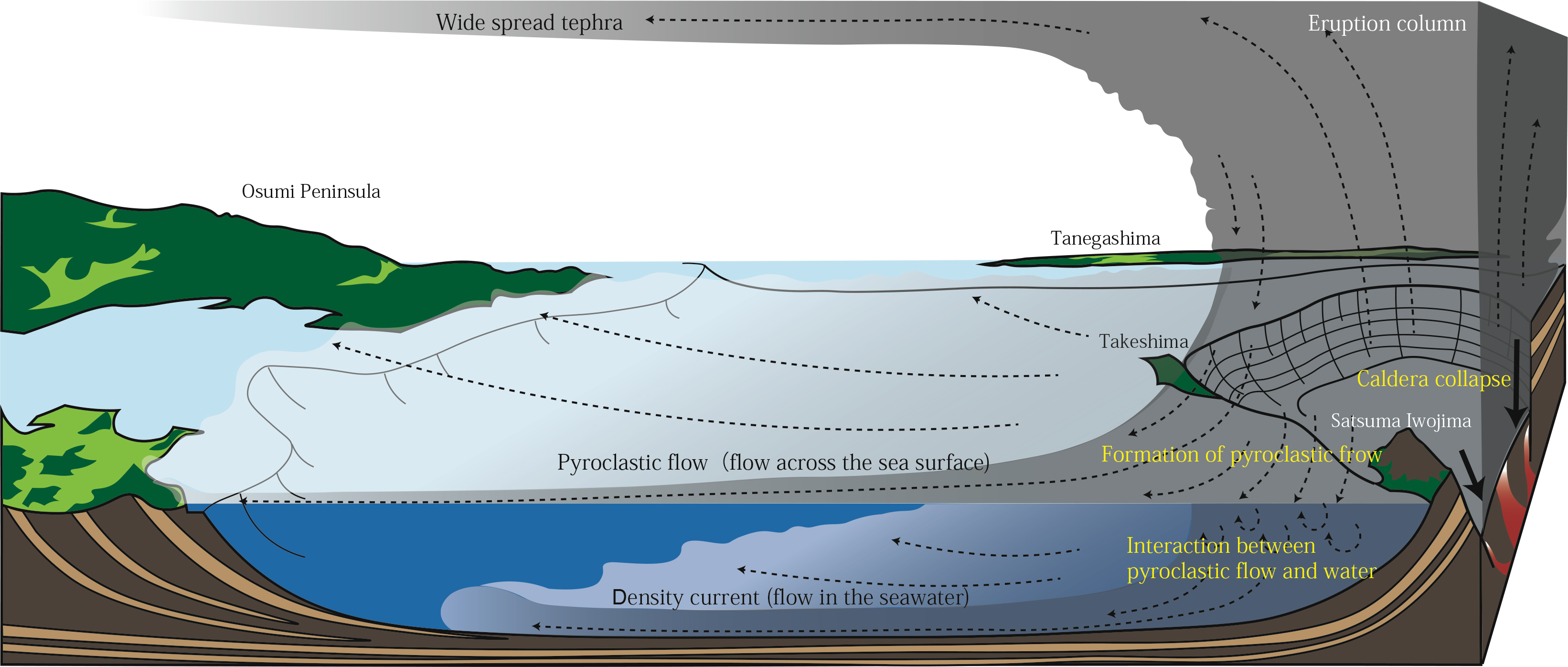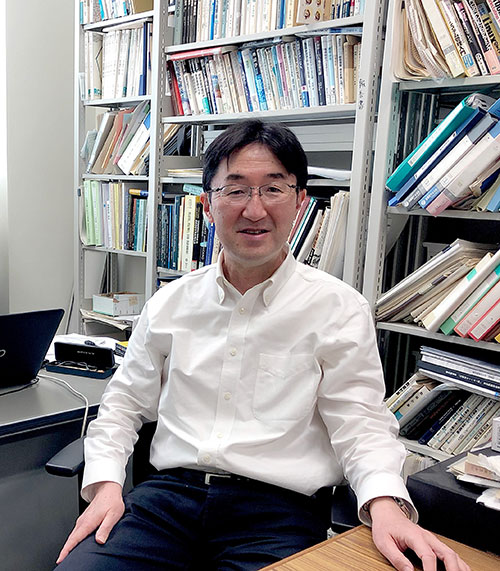
There is a 70-80% chance that the Nankai Trough Megathrust Earthquake will occur in the next 30 years. It is predicted to cause more extensive damage than the 2011 Great East Japan Earthquake and fatalities may exceed 320,000. It is believed that this megathrust earthquake will occur when the strain energy that accumulates at the plate interface due to the subduction of the Philippine Sea plate beneath the Eurasian plate (or Amur plate) on the landward side exceeds a certain limit, which will cause the continental Eurasian plate to spring up. In recent years, the relationship between slow slip events and giant megathrust earthquakes has received much attention. Slow slip events involve gradual slipping in the plate interface over an extended period of time. What progress has been made in forecasting and elucidating the underlying mechanisms behind megathrust earthquakes? We asked Dr. YOSHIOKA Shoichi, a professor at the Research Center for Urban Safety and Security who is using computer data analysis and numerical simulations to study the mechanisms of earthquakes, about the current state of research.
Interest sparked by the movie “Japan Sinks,” (Nippon Chinbotsu, 1973)
What inspired you to study earthquakes?
Professor Yoshioka:
Looking back, the trigger was the movie “Japan Sinks,” which my grandmother took me to see when I was in elementary school. I was overwhelmed by the dynamic images of magma erupting from volcanoes and Japanese Islands sinking. This movie ignited my interest in solid geophysics. When I was studying at the Faculty of Science at Kobe University, I belonged to a laboratory that was studying rock mineralogy, which was part of the solid geophysics field. Solid geophysics covered earthquakes in a broad sense, so I was studying aspects relating to earthquakes, not earthquakes themselves. I then went on to graduate school at Kyoto University, where I began researching seismology in the research division for earthquake prediction and measurements.
Did the 1995 Great Hanshin-Awaji Earthquake (commonly known as the 1995 Kobe Earthquake outside of Japan) affect your research?
Prof. Yoshioka:
At the time of the Great Hanshin-Awaji Earthquake, I was an assistant professor at Ehime University. Even though I lived in Matsuyama City, Ehime Prefecture, which is more than 200 km away from the epicenter, the motion caused by seismic waves was so intense that I initially thought that the so-called Tokai Earthquake had occurred. About three weeks after the Hanshin-Awaji Earthquake, I visited the damaged areas, saw the Nojima fault on Awaji Island, and went around Kobe City. I remember that the building where I used to live when I was a student was gone, I had many valuable experiences at Ehime University, but I was still studying solid geophysics as a pure science because there were no earthquake specialists there. Consequently, I did not feel like I was tackling earthquakes head-on.
Analysis of observational data using computers
Your current research theme is earthquake forecasting and occurrence mechanisms. What led you to this theme and when did you start to research it?
Prof. Yoshioka:
In 2009, I was appointed to the Research Center for Urban Safety and Security at Kobe University. The Center was conducting research that would be beneficial to people under principles of “protecting human lives” and “mitigating and reducing disasters.” Many of the researchers at Center were in the engineering field, so I decided to get involved in earthquake forecasting and research on earthquake occurrence mechanisms. Up until this point, my research had focused on deep regions of the Earth. However, as major earthquakes occur in shallow regions, I shifted my research to regions shallower than a depth of about 50 km. I decided to advance my research by utilizing my own methods and originality, which I had cultivated up to that point.
What exactly do you mean by originality?
Prof. Yoshioka:
Many researchers study earthquakes through observations. I did not want to conduct observational studies. Instead, I wanted to focus exclusively on computer-based data analysis and numerical modeling. I value originality in my research, so I did not want to repeat the research of others. I aim to promote highly original research as an entire laboratory via collaborations with students; devising ideas on my own, and discussing them with students.
It seems challenging to elucidate the occurrence mechanism of megathrust earthquakes by analyzing observational data. Your research has been approved under the Kobe University Strategic International Collaborative Research Grant program\* and you are going to work on joint research with researchers in Mexico and Chile. Could you tell us more about this exciting collaboration?
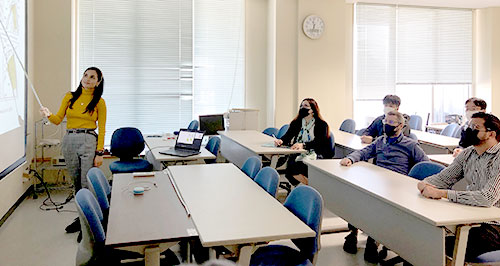
Prof. Yoshioka:
I am interested in mathematical and physical approaches using observational data from Japan, Mexico, and Chile to understand and forecast earthquake occurrence mechanisms. All three countries are located on the Pacific Rim, where megathrust earthquakes are likely to occur as oceanic plates are subducted beneath continental plates. Japan experienced the 2011 Great East Japan Earthquake, Chile experienced the world’s largest earthquake in 1960; the Valdivia Earthquake with a magnitude of 9.5 and then the 2010 Maule Earthquake with a magnitude of 8.8, and Mexico experienced the 2017 Tehuantepec Earthquake with a magnitude of 8.2. Furthermore, these countries have seismic gap areas, where earthquakes have not occurred for long periods of time. For example, the Guerrero region in Mexico has not experienced an earthquake in over 100 years. Similarly, Chile also has a seismic gap area, and Japan has the Nankai Trough.
Previously, I invited my current co-researchers from Mexico and Chile to Kobe under the Research Center for Urban Safety and Security’s program. I thought it would be interesting to join forces because we have already been in contact and our research interests align.
Discovery of slow slips after the Great Hanshin-Awaji Earthquake
Why has the relationship between slow slip events (or slow earthquakes) at plate boundaries and large earthquakes recently received much attention?
Prof. Yoshioka:
A slow slip event is a phenomenon discovered in Japan around 2000 in which two plates slowly move in opposite directions at a plate boundary. After the Great Hanshin-Awaji Earthquake, the National Research Institute for Earth Science and Disaster Resilience (NIED) established a highly sensitive seismic observation network called “Hi-NET” throughout the Japanese Islands. This network detected tectonic tremors, which were previously thought to be noise such as train and truck vibrations. However, a detailed investigation into this noise found that it is neatly arranged in a belt-like form on the deep extension plane of the hypothetical source area of the Nankai Trough Earthquake (from the northern part of Shikoku to the Tokai region through the central part of the Kii Peninsula). In addition, the Geospatial Information Authority of Japan established a high-performance GPS observation network in about 1,300 locations throughout Japan to observe how the ground surface moves over time. This network identified slow slip events in the Bungo Channel between Kyushu and Shikoku islands. Subsequently, slow slip events were confirmed on deeper planes in the Pacific Rim, including California and Alaska in the United States, as well as Canada and New Zealand. These deeper planes are extensions of plate boundaries located in seismic gap areas of megathrust earthquakes.
I believe that computer simulations of such slow slip events should help us to understand the mechanism behind megathrust earthquakes, forecast earthquakes with a certain degree of precision, and clarify the outcomes. Since it is now known that slow earthquakes can cause fast earthquakes (regular earthquakes), it is worth a try.
What are your future research plans and goals?
Prof. Yoshioka:
Although it is quite difficult to elucidate the core occurrence mechanism behind megathrust earthquakes, I am determined to steadily advance our collaborative research and publish our efforts as international joint papers. Japan has an abundance of high-quality observational data and has developed unique technologies from this. Mexican researchers often create mathematical models to explain the occurrence of earthquakes, while some Chilean researchers are experts in artificial intelligence. Thus, our collaboration will deliver certain outcomes. We believe that we can get as close as possible to the true nature of megathrust earthquakes by developing a temperature structure model, which links the temperature–dehydration relationship (in which plates tend to slip when dehydrated due to increased temperature and pressure) to actual earthquake events.
It is said that accurately predicting earthquakes is difficult. Will it be possible in the future?
Prof. Yoshioka:
Statistically speaking, Nankai Trough earthquakes are likely to occur once every 90–150 years based on past earthquakes. The biggest issue is that this forecast does not use any current observational data from high-sensitivity seismographs or GPS. In the case of the 2011 Great East Japan Earthquake, data showed that slow slip events occurred in areas under the sea immediately before the earthquake. We hope to incorporate such data to find a relationship between slow slip events and megathrust earthquakes to improve forecasts. Robust earthquake predictions must accurately extrapolate three factors: the location of occurrence, the time of occurrence, and the magnitude of the earthquake. Among the three, it is particularly difficult to predict the timing of an earthquake. Within a few years’ time, I hope to be able to forecast megathrust earthquakes at a reduced rate of error. To this end, I strive to pass my research results on to the next generation in hope that they will contribute to future breakthroughs.
Profile
Enrolled in the Department of Geophysics, Graduate School of Science, Kyoto University in November 1990; Research Assistant at Ehime University from April 1994 to July 1997; Associate Professor at Kyushu University from August 1997 to September 2009; Present position from October 2009; Served as Director of the Research Center for Urban Safety and Security from April 2020 to March 2022.
Messages from Overseas Researchers
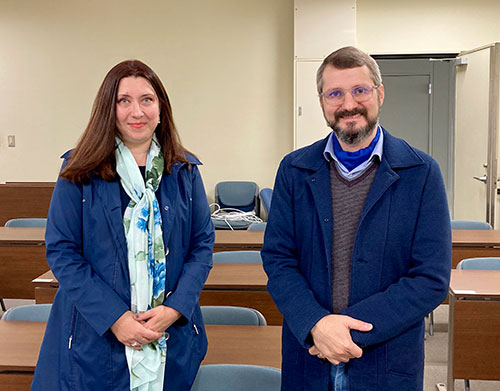
- Dr. Marina Manea, Senior Researcher, National Autonomous University of Mexico
- Professor Vlad Constantin Manea, Senior Researcher, National Autonomous University of Mexico
Although research exchanges such as data sharing can be conducted even when we are far apart, an actual stay at Kobe University accelerated our research exchange as students from both universities could actively participate. Initially, we each had our own vision of how to elucidate the occurrence mechanism of a giant earthquake. Through repeated discussions, we began to understand each other’s way of thinking and generated new ideas. By analyzing and benchmarking earthquake data from Japan and Mexico, we aim to elucidate the occurrence mechanism of massive earthquakes and ultimately make accurate earthquake predictions. We plan to proactively publish our research results in academic journals.
*Note
- Strategic International Collaborative Research Grant | Kobe University
Prof. Yoshioka’s project has been approved as a Type B project under the Kobe University Strategic International Collaborative Research Grant program. - Kobe University’s research highlights:
Illuminating how huge earthquakes occur in Japan, Mexico and Chile





